Acquired a pipe threader, she's a Toledo 999 with 2" capacity, 3 phase 240/ 440v, plus all cast iron and steel. All!
Weighs not less than 350 pounds on the stand and set of dies. It had next to zero mobility; so puzzled out a cure.
The 4 legs are splayed outboard, but perpendicular to machine axis, rendering it stable enough. This 'stance' was an issue to attaching wheels that would do what I felt it needed; parking on 4 feet, and trundling to next location. Physically dragging it equals a Herculean task.
Finally the light came on, within limits of equipment on hand (away from home base).
The drawing and photos try emphasizing how they "work", on gravity alone, rake and trail keep them engaged until flipped up. The leverage to do so provided by wheelbarrow type handles.
Design accommodates inconvenience of leg configuration by welding square to floor, while leg tips elevated 1/2"; at heavier end under the motor, but not extended beyond that load but aft.... using portion of motor weight as a forward counterbalance.
The barrow handles will be 1" pipe with collars at one end to keep them in the supports, they'll retract to clear the operators position to the right, and cycle type grips at other end, not installed yet. She acts like tipping handles down will swing casters into position, if not, there are footpads to step on. Everything is rectangular tube, remnant round bar, standard fasteners, a few inches of 7018 electrode.
What I named the hinge (off center) makes backside the heavier end of caster mount. The stop uses gravity, rake and trail to keep wheel in moving position. It also helped the welding setup with leg tips raised 1/2", and wheels touching. The rear end of the caster frame is cut away so it (caster mount) swings freely, front of caster mount cut away for extra imbalance and swing clearance.
Forgive liberties in sketch, MSPaint is not quite CAD.
I'm ready for any questions, fire away!



 LinkBack URL
LinkBack URL About LinkBacks
About LinkBacks
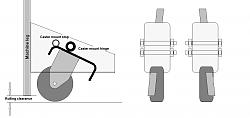
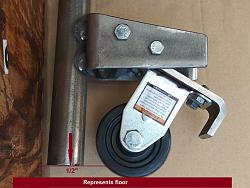
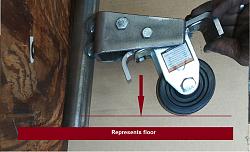
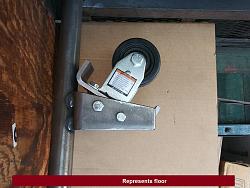


 Reply With Quote
Reply With Quote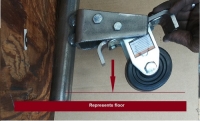



Bookmarks